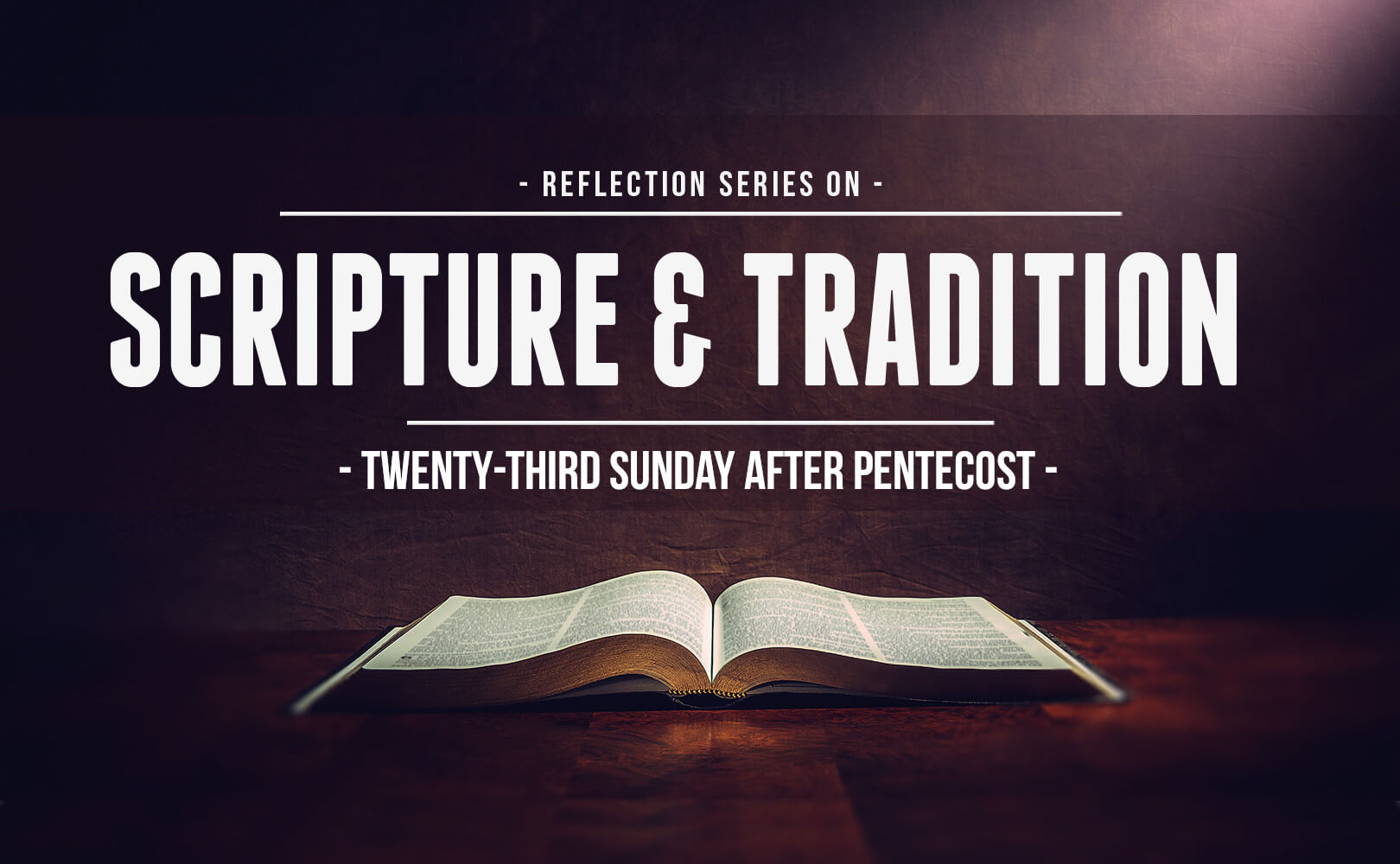Epistle: Philippians 3.17-21;4. 1-3
Gospel: Matthew 9.18-26
Absolve, we beseech Thee, O Lord, the sins of Thy people; that we may be delivered by Thy goodness from the bonds of sins, which by our frailty we have committed.
– From the Collect for the Twenty-Third Sunday after Pentecost
Sunday’s readings reflect on the relationship between the body and the soul, between the flesh and the spirit.
St. Paul warns the Philippians to watch out for the “enemies of the cross of Christ.” Who are these enemies? Those “whose God is their belly” and “who mind earthly things.” In other words, they put the desires of the flesh before the needs of the spirit. Why does that make them specifically enemies of the “cross of Christ?” Because the Cross is our model for salvation: death to self and our desires wounded by Original Sin. Instead of catering to our bodily desires, we must put obedience to God first, even to the point of death.
St. Paul tells us what our destination is if we are obedient to the Lord: Christ will “reform the body of our lowness, according to the operation whereby also He is able to subdue all things unto Himself.” The destination of our bodies, if we are faithful to Christ, is not destruction, but is the same as what has already occurred for the Blessed Virgin Mary: a glorified body in Heaven for eternity with God. By denying the body now, we will obtain far greater bodies in the future.
In Sunday’s Gospel, we see the importance of the body in a different light. In this case, Jesus encounters two individuals with physical problems: the ruler’s daughter who had just died, and the woman with the twelve-year issue of blood. This Gospel helps to “balance,” so to speak, the temptation that might rise up from the Christian’s proper discipline of the body. Although we are to master our flesh and give precedence to the spirit, we do not, like the heretics, believe the body is an evil. It is a created good that has been marred by Original Sin. As such, we suffer illness and death. But in the miracles of Sunday’s Gospel, Christ demonstrates his power over even physical ailments. They are signs of the eventual healing and glorification of the body of each of the elect at the end of time.
St. Augustine tells us that this Gospel passage also points to the path of the Jews and the Gentiles in Salvation History (cf. Sermon 63B). The Jewish people are represented by the synagogue ruler’s daughter. Jesus goes to her, just as he goes to the Jews with his preaching. But the Gentiles are signified by the woman with the flow of blood, whom Jesus essentially ignores, just as he did not preach to the Gentiles during his public ministry. Yet who is saved first? The woman with the flow of blood. Likewise, the Gentiles are the first to accept Christ as a group, not the Jews. Yet the ruler’s daughter is saved as well, and as St. Augustine says, “The Jewish people saw and at first they crucified. But later they too came to him. Also the Jews will believe—but at the end of the world.”
Every person—Jew or Gentile—is called to recognize his body as a gift from God, but a gift which, by the sin of our First Parents and our own sins, has been deformed and can lead to destruction. By trusting in Christ and embracing his Cross, however, we can one day be united with him, body and soul, in Heaven.


